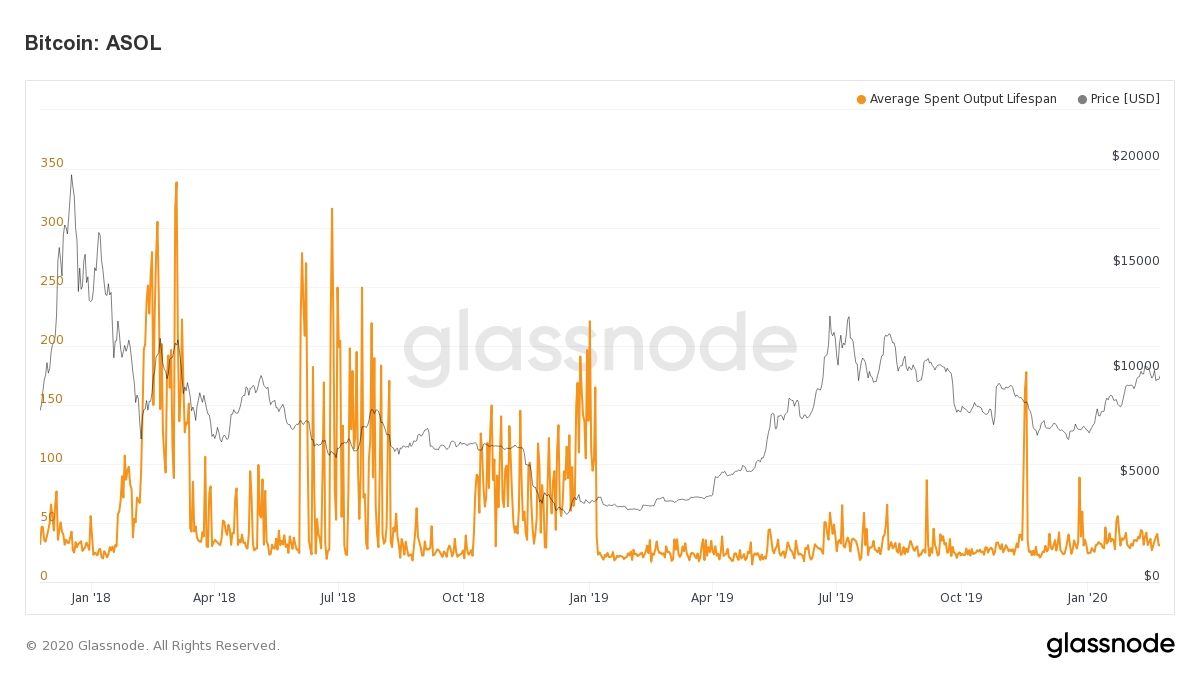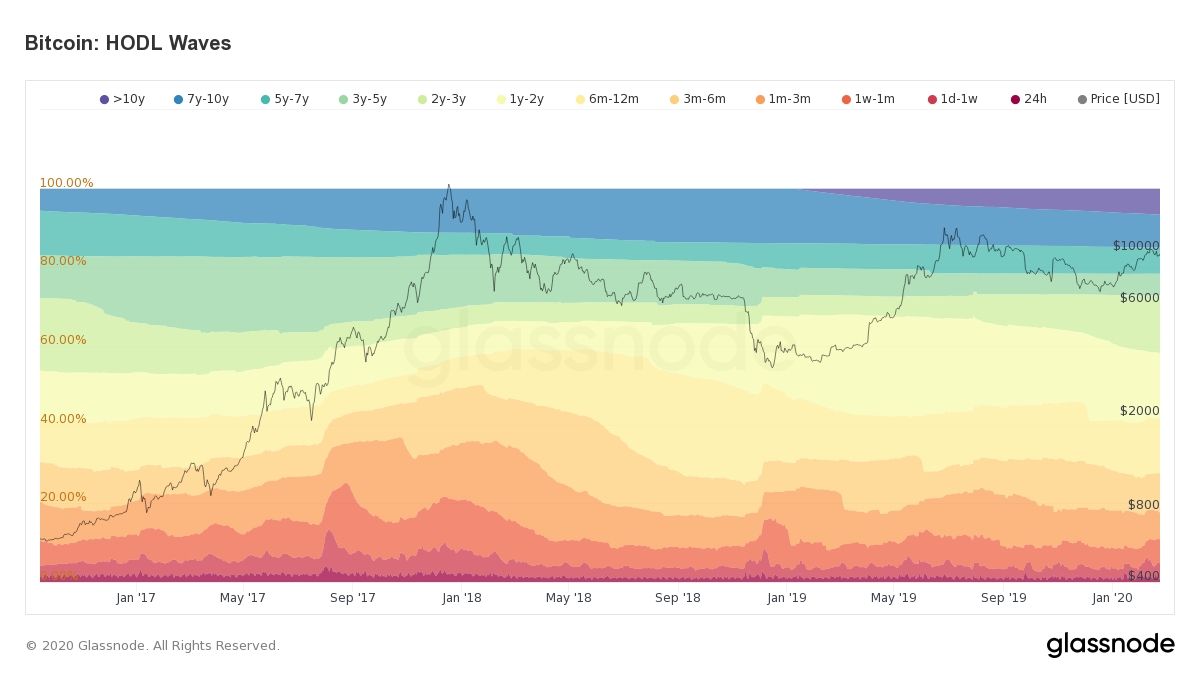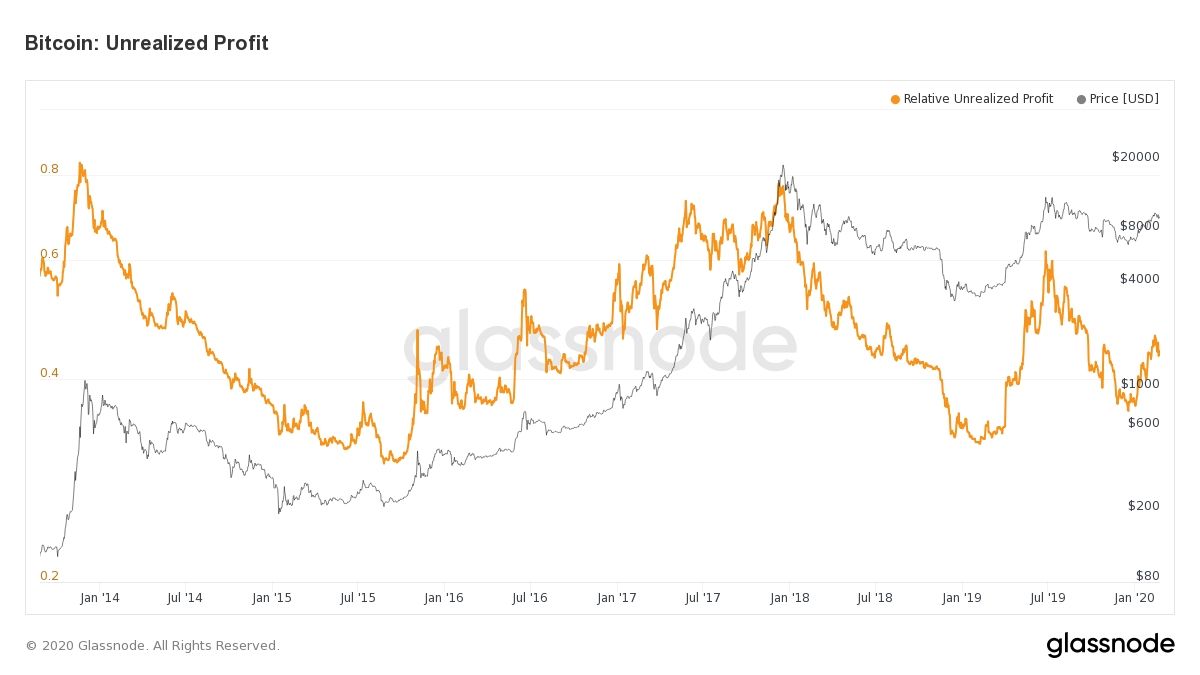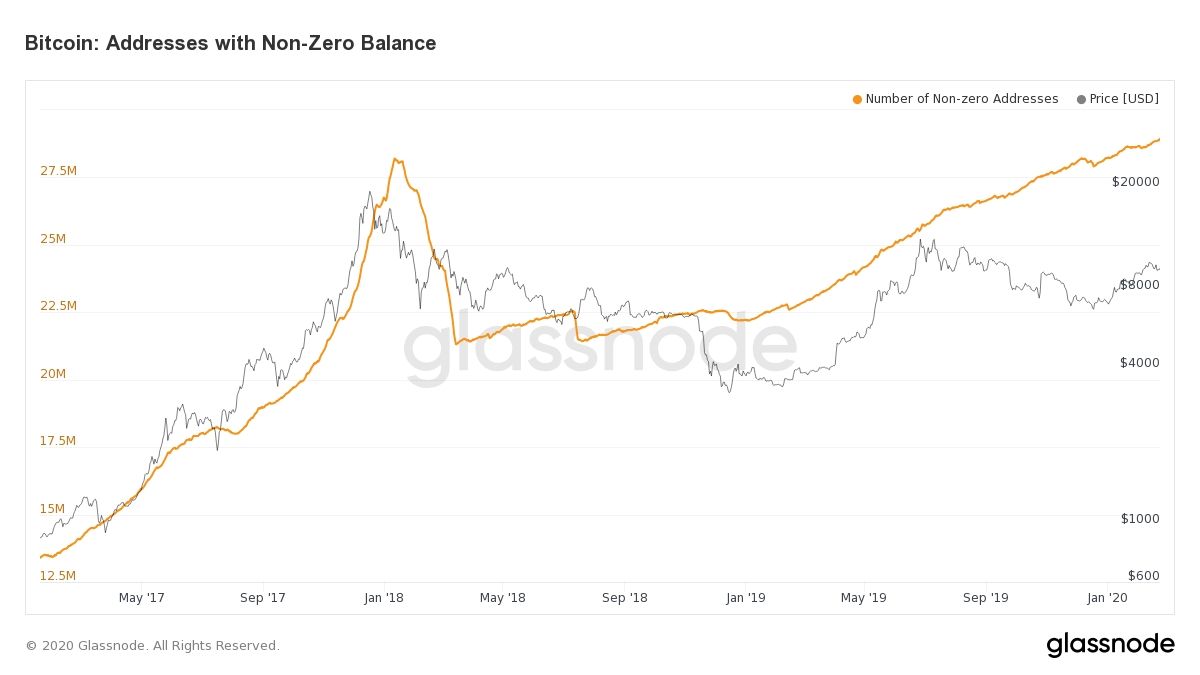Looking at the actual activity of Bitcoin from the on-chain data: it is inconsistent with analysts' predictions of the market below $ 8,000

At the beginning of February, the cryptocurrency market performed quite well. Many altcoins reversed the downtrend line formed since 2 years ago. While the transaction volume continued to soar, the price broke the 200-day moving average, which almost provided investors with two days a day. Number or even triple digit returns.
On February 13th, Bitcoin (BTC) was trading at $ 10,500. Optimistic analysts predict that the $ 11,000 and $ 11,500 resistance levels will be taken down at any time and will quickly return to the upper range of $ 12,000. Although Bitcoin was blocked at the $ 10,400 position and fell back to $ 9,500, the confidence of most investors is still bullish, and many analysts believe that another test of $ 9,400 is inevitable.
All this changed with the advent of the coronavirus. The virus was officially named COVID-19 and has been making headlines since late December 2019, but in the last two weeks, as investors began to think about the worst-case scenario where virus spread could affect economic productivity, concerns over the uncontrollable epidemic began Spread to global markets.
- Zhu Jiaming: Finance and Technology in "Abnormal State" (with full speech)
- New users can also set it up in minutes, take a look at these five Ethereum DeFi applications that change the savings experience
- The Fed's emergency rate cuts are expected to halve in anticipation. Will the Bitcoin bull market still come?

Cryptocurrency market overview for 1 week. Source: Coin360
As Cointegraph previously reported, the global market and the cryptocurrency market plummeted last week, with the stock market value of $ 3.6 trillion evaporated and the cryptocurrency market value of $ 48 billion. Bitcoin price has fallen by $ 1,500 in just one week, and analysts are now worried that if the global market continues to plummet, this digital asset may return to the $ 7,000 range.
How active is the Bitcoin chain?
Investors who rely on standard data technology analysis may hold a bearish view on Bitcoin's short-term market. But how does Bitcoin's on-chain activity evaluate the status of this largest digital asset in the market?
In order to understand this in depth, Cointelegraph and Glassnode co-founder Jan Happel exchanged information on various blockchain indicators and how to analyze the current and future state of the Bitcoin market to investors.
Cointelegraph: According to the Cryptocurrency Fear and Greed Index, Bitcoin price closed down $ 1,500 last week, and investor sentiment turned bearish. Does Bitcoin's on-chain data support the same view?
Jane Happel: Overall, long-term bitcoin investor sentiment seems to be positive at the moment. The Bitcoin ASOL (Average Used Output Lifetime) metric is a metric that shows the average life cycle (in days) of used output transactions.
As long as ASOL stays low, we don't have to worry about long-term holders trying to transfer and sell their coins. This spike in indicators for weeks in a row may be worrying-historically, this phenomenon was observable during large-scale sell-offs.

Bitcoin ASOL data. Source: glassnode.com
CT: How do you evaluate the large-scale sell-off and falling prices last week? Does this mean that Bitcoin investors will leave the market?
JH: Not necessarily. The Bitcoin HODL waveform chart shows that the number of Bitcoins that have not moved for more than 2 years is still increasing, which further shows that there are more investors holding Bitcoins than a year ago.

Bitcoin HODL waveform chart. Source: glassnode.com
In addition, the book floating rate is at a healthy level, and there is no sign that the market has reached its peak. Historically, this indicator has often been able to determine top and overvalued markets-at present, it is at a level similar to what it used to be when bull markets started in the past.

Bitcoin's book floats, source: glassnode.com
CT: Most of the media throughout the end of 2018 and 2019 reported almost every aspect of the Bitcoin network to an all-time high. What can the on-chain data tell us about the actual activity of the Bitcoin network?
JH: Network activity and growth have recovered from last year. For example, the number of adjusted transactions by institutional entities is again on the rise. These are basically the total number of transfers between different entities, but do not include transfers that occur within the same entity address.
The number of addresses with a non-zero weekly balance also hit a record high.

Non-zero balance Bitcoin address, source: glassnode.com
Our R & D team recently discovered that more than 75% of the transaction volume on the Bitcoin chain will not actually be transferred. In fact, a recent glassnode report states:
"There is no doubt that the on-chain data is of high value, but its raw data is not good enough. Because it contains a lot of noise, it needs to be carefully pre-processed and linked to specific environmental analysis in order to extract useful information from it."
Original link: https://cointelegraph.cn.com/news/bitcoin-on-chain-analytics-at-odds-with-sub-8k-bitcoin-price-forecasts
More information: CointelegraphChina / Login https://cointelegraph.cn.com
We will continue to update Blocking; if you have any questions or suggestions, please contact us!
Was this article helpful?
93 out of 132 found this helpful
Related articles
- Blockchain: the antinomy of reality and the future
- Ethereum Foundation member Hudson Jameson: ProgPoW is not worth it, it will die
- Will big data + blockchain create a new Internet industry economy?
- Ten minutes per session, understand the blockchain, "Ling Listening · Blockchain General 70 Lectures" is online
- QKL123 market analysis | Fed suddenly cuts interest rates unexpectedly, global panic has not retreated (0304)
- The wave of "absolute deflation" of platform currency is coming. How should the exchange make a choice?
- Important Ethereum Capacity Expansion Solution: Optimistic Rollup Status Report (Part 2)





